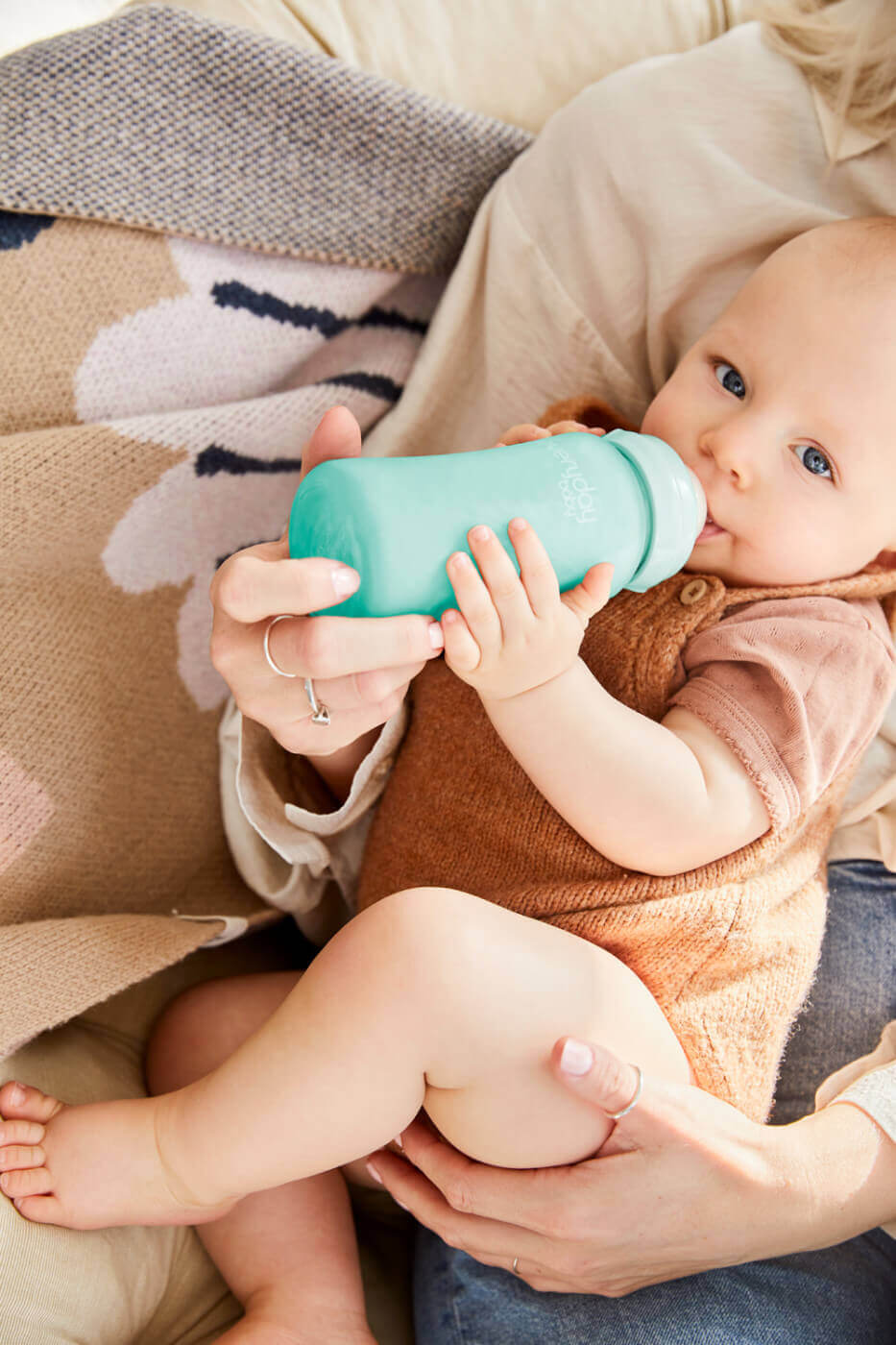Before you make a decision on which baby bottles are best for your baby, here is a quick introduction to the history of baby bottles, when did they start, what were they made up of, etc.
History of Baby Bottles
According to Wikipedia, the first baby bottles appeared in the 16th century. They were made of glass, pewter, and silver. The rubber nipple was not invented until 1845 by an Englishman named Daniel Green.
The next major change to baby bottles came in 1892 when Maximillian Gruenstern patented the first plastic baby bottle. This was a big deal because now parents had a much cheaper option for feeding their babies.
Since then, there have been many different materials used to make baby bottles including glass, plastic, silicone, and even paper!
Prehistoric Baby Bottles
As early as 1500 BCE, Egyptian pottery shows images of women breastfeeding their babies and also using animal horns to feed them.
Containers with hard spouts date too early in recorded time, as evidenced by archeological finds. The first vessels known to be used for feeding infants had an opening at one end for filling the bottle, and a second at the other to be put into the baby's mouth.
Examination of the organic residues on ancient ceramic baby bottles shows that they were used as early as 1200 BCE to feed babies with animal milk.
Pyrex (Vintage) Baby Bottles
The pyrex baby bottles are now a collector's fantasy. You can find them on eBay for upwards of $100.
Pyrex bottles were first introduced in the United States by Corning Inc. in 1922. They were offered in three shapes (narrow neck, wide mouth, and flat) and multiple sizes, for a total of ten varieties.
By 1925, the product line had been limited to a small subset of the original shapes and sizes. In the 1950s an upright Pyrex bottle with a narrow neck was introduced. In the 1960s a wide-neck version was finally introduced to the UK market.
What Did Our Grandmothers Use In Their Time?
Best Glass Baby Bottles and Why You Should Go Old-School. If you go back in time, say around 100 years ago, our grandmothers were using glass baby bottles with rubber nipples.
The bottles were made of thin glass so they could be easily crushed if dropped. The nipples were made of rubber and had to be regularly replaced because they would get worn down and cracked.
Glass Bottles Improved Over The Years
Lot has changed in the last century and baby bottles are no exception.
Nowadays, glass baby bottles are made of thicker, sturdier glass that is less likely to break if dropped. The nipples are also made of silicone which is a much more durable material than rubber.
Advantages of Glass Bottles
Glass baby bottles have many advantages compared to their plastic competitors. It is a well-known fact by now that plastic is hazardous to health in many ways. Following are the advantages of using glass bottles instead.
1. Glass is a natural material that is eco-friendly and can often be recycled.
2. It does not leach chemicals into your baby's milk like plastic bottles can.
3. Glass bottles are easier to clean than plastic bottles because they do not retain smells as easily.
4. Glass bottles are more durable than plastic bottles and less likely to get scratched or cracked.
5. Glass baby bottles can be used for longer than plastic bottles because they do not degrade over time as plastic does.
6. Thick glass bottles do not break easily even when they fall.
Silicone Coated Glass Baby Bottles
One of the best glass baby bottles on the market is silicone coated. The silicone coating makes the bottles shatterproof, lightweight, and easy to grip.
These glass bottles are made of food-grade silicone, a non-toxic polymer that is mostly composed of silica (sand), which is lightweight, flexible like rubber, and does not shatter, making it ideal for eco-friendly baby bottles.
Unlike plastic, it can withstand high temperatures without leaching dangerous chemicals into the milk.
Innovations in Baby Bottles
As it has been noted before silicone-coated glass baby bottles are not only eco-friendly but safe for baby's health too. Additionally, there are many innovative improvements made to silicone-coated glass baby bottles.
Silicone allows inventors to create baby bottles in different colours. We at Everyday Baby have experimented with pastel shades of baby bottles, making them attractive to the babies.
Another innovation in baby bottles is the baby-friendly shapes that allow the baby to have a firm grip on their bottles.
The length, weight, and width of the bottles have also been adjusted to make them ergonomic for babies to drink from.
Conclusion
Going back in history, we can see that glass bottles were the first choice for our grandmothers too. So, why shouldn't we take the safe route too?
Instead of polluting the planet with plastic, silicone-coated glass bottles are a safer choice, not only for our children but for our future generations too.
The earth is our responsibility too, isn't it?



